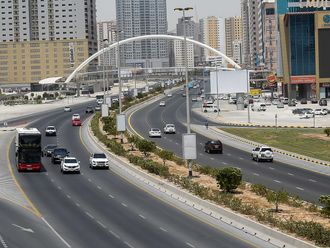
Abu Dhabi: As the world watched the coronavirus rage across China two months ago, it also saw the rapid pace at which two hospitals were built.
Within 14 days, the two facilities in Wuhan were set up to provide 2,600 additional hospital beds for those infected with the virus. And when the pictures were revealed, it was clear that these were field hospitals.
Now, as the virus ravages other countries, field hospitals have become a mainstay of coronavirus treatment, with countries ramping up construction and operations to convert existing buildings into fully-fledged hospitals. New York’s first field hospital was set up at the Javits Convention Centre and London converted its massive ExCel London exhibition and convention centre into the NHS Nightingale Hospital.
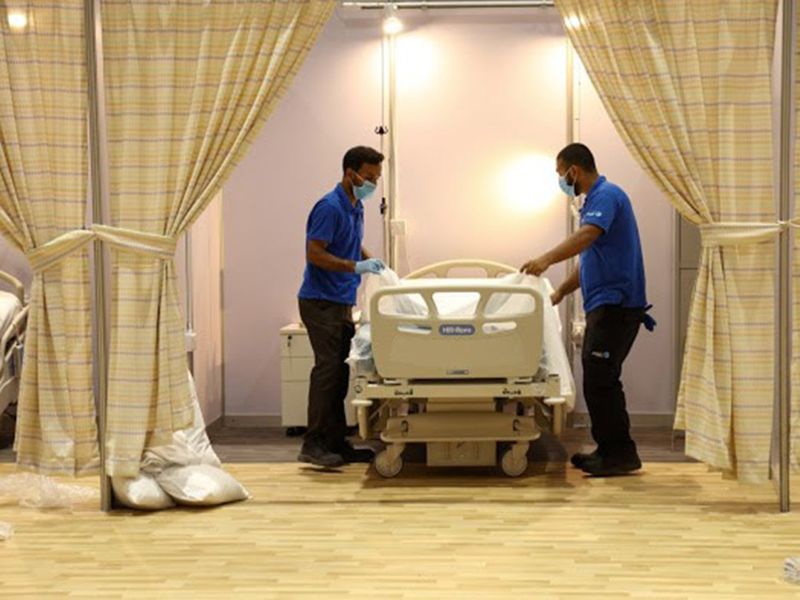
The UAE has followed suit, opening up its first field hospital at the Dubai World Trade Centre on April 18. Fitted with 300 beds, the facility can be expanded to accommodate 3,000 beds.
Soon after, three other field hospitals were announced, including a 1,000-bed one at the Abu Dhabi National Exhibition Centre in the capital, another with 1,200 beds at the Emirates Humanitarian City in Abu Dhabi’s Mohammad Bin Zayed Suburb, and a third with 1,200 beds to be located at the Dubai Parks and Resorts. These will be managed by the Abu Dhabi Health Services Company (Seha), Abu Dhabi’s public health provider.
What is a field hospital?
According to Dr Sherbaz Bichu, chief executive officer and specialist anesthetist at Aster Hospitals, the concept of a field hospital is one rooted in the battlefield. This is not surprising, given that much of the current pandemic has been referred to as an ongoing battle against a microscopic enemy.
“Field hospitals are common in war zones, where they are set up to a large number of wounded personnel at the same time. In the case of a pandemic, with many people getting people at the same time, they are just as useful,” Dr Bichu explained.
Advantages
With dozens of beds placed adjacent to one another, these facilities allow for cohort care, where a dedicated team of healthcare professionals care for patients infected with a single infectious agent.
“Cohort nursing is the most obvious advantage of designated field hospitals to treat COVID-19. In such a setting, one nurse can tend to up to a 10-12 patients, instead of just 4-5 at a time. This decreases staffing needs, and as a result, less personal protective equipment is required,” Dr Bichu said.
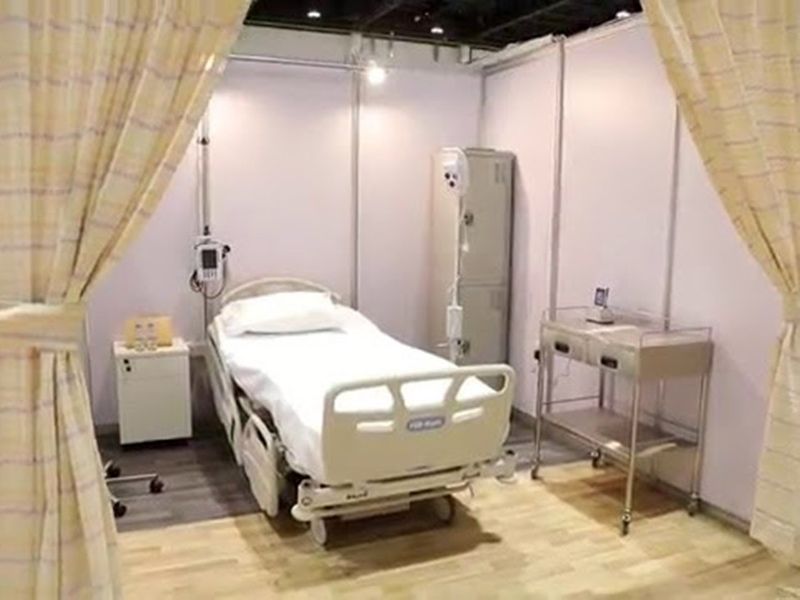
Because personal protective equipment like masks, gloves and surgical gowns have become valuable commodities in the fight against COVID-19, this is an important benefit.
In addition, all operations are centrally controlled, allowing for quicker decision making as treatment protocols change for a disease that is still being explored and understood, Dr Bichu said.
And, given that many expats in the UAE live in shared housing, the large number of beds at field hospitals allows infected patients recover in in quarantine, away from uninfected roommates and flatmates.
Challenges
However, field hospitals do have certain disadvantages. For example, privacy can be limited, given that beds are placed in close proximity to one another. Patients also have to share bathrooms, while staff are usually allocated separate bathrooms.
Unlike mainline hospitals, field hospitals have limited surgical intervention capacity.
And because people treated at these field hospitals carry a contagious virus, patients have to be isolated from family members and friends, who cannot visit the facility.
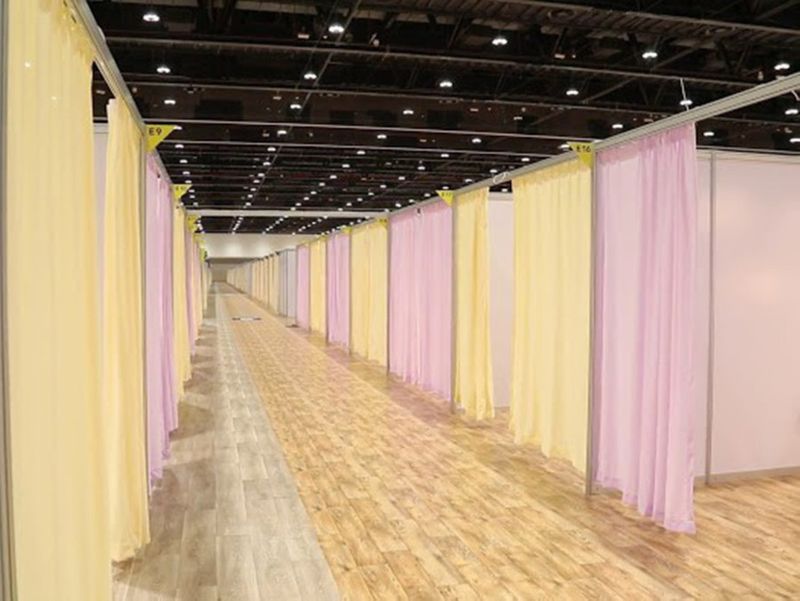
Special provisions in UAE
Facilities in the UAE have however overcome many of these challenges.
The Dubai World Trade Centre hospital, which has 300 beds and can be expanded to accommodate 3,000 beds, quickly facilitates hospital transfers for patients in critical condition.
Meanwhile, the 1000-bed ADNEC hospital has curtains installed for privacy between beds at the 1,000-bed ADNEC hospital. In this way, each patient has a pseudo-cubicle to himself.
And going beyond basic amenities, it also offers free high-speed Internet, personal iPads for each patient, as well as access to gym facilities and shared televisions.
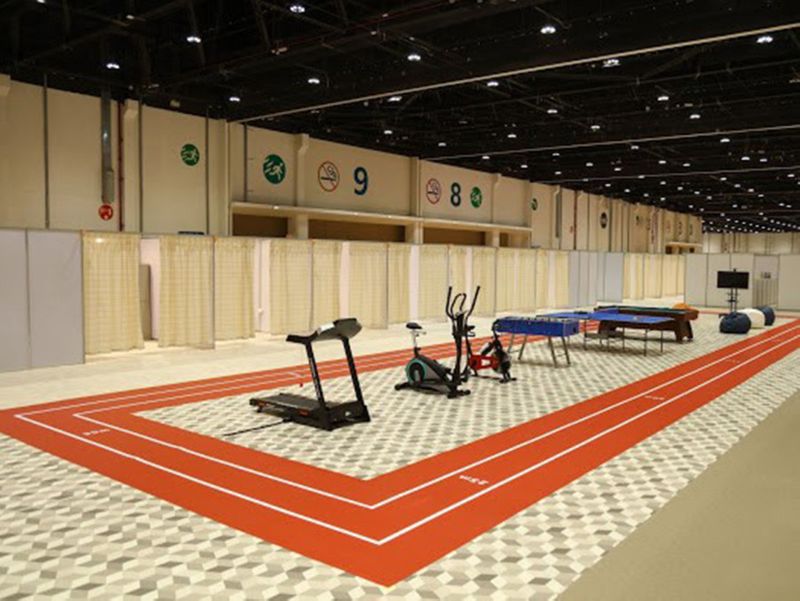
“There are 48 urgent care beds with oxygen supply to stabilise critical cases and a plan is in place to transfer critical cases to hospitals in a timely manner,” said Dr Anwar Sallam, group chief medical officer at Seha.
Each bathroom is shared by seven patients, and that the beds are placed in single cubicles.
“This facility has been designated only for male patients, whereas female patients and families will be treated at the Emirates Humanitarian City,” he said. Presumably, this has been done in response to cultural privacy preferences in the UAE.
Abu Dhabi’s field hospitals are designed to manage and treat mild to moderate cases, whereas patients with severe infection, the elderly and children are being treated at mainline facilities.
As announced, each of Seha’s field hospitals will be manned by 150 to 200 medical professionals.
Till date, the number of coronavirus cases in the UAE has exceeded 10,000. It is however hoped that a fully active and advanced healthcare sector, bolstered by multiple field hospitals, will help the vast majority of COVID-19 patients to safely recover from the disease.









